Building a Collection #63
Pétrouchka (Petrushka)
By Igor Stravinsky
________________
“There is no beauty in music itself, the beauty is within the listener.”
― Igor Stravinsky
Igor Stravinsky
Igor Stravinsky was born in 1882 in Orianenbaum, Russia (near St. Petersburg) and died in 1971 in New York. Highly original and inventive, he is one of the most influential composers in history. Stravinsky’s style is hard to pinpoint, as he moved from styles as diverse as Russian nationalism to neo-classicism to 12-tone principles to jazz-inflection. Even with these diverse guises, his music always retained its own identity.
When he was young, Stravinsky was not a musical prodigy. Although he entered law school in the early 1900s, Stravinsky loved music and began private composition and orchestration studies with the famous Russian composer Rimsky-Korsakov. Soon he was producing his own compositions, and he caught the attention of ballet impresario and founder of Ballets Russes Sergei Diaghilev. Diaghilev subsequently asked Stravinsky to compose ballet music for his company. A triad of early ballets, The Firebird (1910), which made him famous almost overnight, Pétrouchka (1911), and The Rite of Spring (1913) cemented Stravinsky’s reputation as one of the most important Russian composers of his time.
In those early works, although they were typically nationalistic, it was already evident that Stravinsky was a risk-taking and unusual composer. While his writing was for the ballet, the music stood on its own and went far beyond what was required for the dance. Stravinsky’s use of “polytonality” was unique and striking for the time. Polytonality is the use of more than one key in the music simultaneously. It adds complexity, color, and often dissonance to the music, and Stravinsky was a master at using it. To ears accustomed to hearing classical and romantic themes up until the twentieth century, Stravinsky’s music would have sounded completely different, modern, dissonant, sharply-angled, even ugly. Stravinsky was also quite original with his use of rhythms, and his use of different rhythmic combinations became another hallmark of his musical style.
Stravinsky would live in France in the 1920s, and his works from that period were influenced by the jazz music that was taking hold in Paris. His works Ragtime and The Soldier’s Tale are examples of this, but then he soon turned to a more neoclassical style with such works as Pulcinella, Symphony of Psalms, and The Rake’s Progress. These compositions would have a lot of impact, and would also influence other composers, especially in America. Stravinsky toured America in the 1930s, and wrote several other pieces commissioned by American orchestras.
Sadly, Stravinsky’s wife, daughter, and mother all died within the space of a year and in 1940 he emigrated to America, settling in California. Stravinsky was eventually influenced by the more modern 12-tone movement, and he composed several works using 12-tone as a tool, but always in his own original way. In the late 1950s and early 1960s when stereo recordings were beginning, Stravinsky made a series of recordings where he conducted his own works for Columbia Records (now on Sony). He continued composing until his death in 1971.
Pétrouchka (Petrushka)
Pétrouchka is a ballet in four scenes written by Igor Stravinsky for the 1911 season of Sergei Diaghilev’s company Ballets Russes in Paris (Diaghilev was the famed Russian ballet impresario). Choreography was by Michel Fokine and stage designs and costumes by Alexandre Benois. The premiere took place on June 13, 1911 at the Théâtre du Châtelet in Paris with Vaslav Nijinsky as Pétrouchka, Tamara Karsavina as the lead ballerina, and Pierre Monteux conducting. Pétrouchka was the second of three famous compositions Stravinsky completed for Ballets Russes after The Firebird (1910) and prior to The Rite of Spring (1913), the three successful productions cementing Stravinsky’s reputation and thrusting him into international fame.
Pétrouchka (Pétrouchka is the French spelling, but in English you will often see it spelled Petrushka) is a story using three puppets telling of their loves and jealousies. Pétrouchka is a hand puppet well known to European audiences, known in other countries as Punch (England), Punch & Judy (United States), Pulcinella (Italy), Kasperle (Germany), and Petrushka (Russia). While generally known as a comic puppet, the range of pantomimes and stories used in Russian puppet theatres was wide, and usually included Pétrouchka ending up quarreling with everyone as he had no friends. He took on the role of a sort of morality officer, but in doing so was often cruel, obscene, cynical, and subversive and would often argue with the devil. In nearly every text of Pétrouchka from the 19th century, Pétrouchka dies at the end and is dragged offstage by a dog or a police officer. But even with the dark ending, the overall point of the show was laughter and comic relief.
The puppet Pétrouchka had a big nose giving him a distinctive profile, a hump or two on his back and front, and his face was illuminated by a threatening smile. Usually, he wore a bonnet and red shirt. Other common characters appearing with Pétrouchka included the barrel organ player, the Doctor, the Gypsy, the Police Officer, the Fiancée, and a Foreigner.
Once the Russian Revolution arrived, Pétrouchka moved from outdoor spaces to indoor venues and cinemas in order for the authorities to more closely monitor how subversive the text became and to use the format to advance their own propaganda whenever possible. Pétrouchka and other folk influenced art forms began disappearing slowly under communism, only to reemerge in the 1980s after perestroika under Gorbachev.
In the Ballets Russes production of Pétrouchka, the puppets are brought to life by the Charlatan during the 1830 Shrovetide Fair in Saint Petersburg (Shrovetide is the Christian liturgical period prior to the start of Lent that begins on Shrove Saturday and ends at the close of Shrove Tuesday, also known as Fat Tuesday). Pétrouchka is in love with the Ballerina, but she prefers the Moor. Pétrouchka is angry and curses the Charlatan for bringing him to life only to suffer and feel pain. He foolishly challenges the Moor, who is larger and stronger, and to the horror of the crowd the Moor kills Pétrouchka with his sword. The Charlatan and the Police Officer are called to the scene where the Charlatan reminds the crowd that Pétrouchka is merely a puppet made of straw and has no real life. As the crowd disperses with the Charlatan alone on the stage, Pétrouchka’s ghost rises and shakes his fist at the Charlatan. Finally, Pétrouchka collapses in death for the second time.
Diaghilev had already commissioned Stravinsky to write music for a second ballet after The Firebird, but when Diaghilev visited Stravinsky in Switzerland in the fall of 1910, he found Stravinsky working on a different piece which was intended to be a concert work. The music was highly rhythmic and percussive, with several passages of notes running up and down the page. Diaghilev quickly realized the music would be perfect for the stage, and when Stravinsky mentioned to him that he was working from a vision he had of a puppet suddenly endowed with life, trying the patience of the orchestra and other performers, Diaghilev immediately thought of Pétrouchka as a possible subject. Benois then provided the background details of how to create a ballet from the Shrovetide Fair while including traditions from Russian puppet theatre.
Steven Ledbetter, long time program annotator for the Boston Symphony Orchestra, briefly describes the four scenes:
“The scenario is divided into four scenes, of which the first and last take place on the Admiralty Square in St. Petersburg during the 1830s during the Shrovetide fair (just before the beginning of Lent). These scenes are filled with incident and with elaborate overlays of musical figures representing the surge of characters coming and going at the fair. The second and third scenes of the ballet are interiors, devoted to the private emotional life of the puppet Petrushka, who is in love with the ballerina, while she in turn is enchanted by the Moor. Only at the very end of the work do the “public” and “private” worlds—or should one say “reality” and “fantasy”? —become entangled with one another.
The “plot” as such can be briefly told: the crowds at the fair are drawn to a small theater, where a showman opens the curtains to reveal three lifeless puppets, Petrushka (a sad clown), the pretty but vacuous Ballerina, and the exotic but dangerous Moor. He charms them into life with his flute and they execute a dance, first jiggling on their hooks on the stage, then—to the astonishment of the spectators—coming down from the theater and dancing among the crowd.
The second scene begins as Petrushka is kicked or thrown into his little cell. He picks himself up and dances sadly, conscious of his grotesque appearance. He wants to win over the Ballerina, but when she enters, his ecstatic dance of joy is so uncouth that she flees. The third scene takes place in the Moor’s cell. The Ballerina captivates him, but their tryst is interrupted by the entrance of the jealous Petrushka. They quarrel, and the powerful Moor throws him out.
The final scene reverts to the main square, where the revelry has reached a new height. Crowds surge forward as all seek to celebrate the final evening before the start of Lent. Suddenly a commotion is heard in the little theater; Petrushka races out, closely pursued by the Moor, who strikes him down with a scimitar. The crowd is stunned by this apparent murder, and the showman is summoned. He, the supreme rationalist, demonstrates that the “body” is nothing more than a wooden puppet stuffed with sawdust. The crowd disperses. As the showman starts to drag the puppet offstage, he is startled to see Petrushka’s ghost on the roof of the little theater, thumbing his nose at the showman and at all who have been taken in by his tricks.
The first and last tableaux, which take place in the “real” world of the fair, have little in the way of storytelling; instead, they rely on multiplicity of incidents to suggest the throngs and the surge of life. The orchestra is full and busy, enlivened by various layers of frenzied activity. The inner tableaux differ strikingly in musical character. The orchestra often plays in smaller units, the music is more disjunct, and there is a marked avoidance of the folk material that fills the “public” sections of the score.”
The score indicates the following scenes and parts of scenes in the structure:
First tableau: The Shrovetide Fair
[Introduction]
A group of Drunken Revelers passes, dancing
The Master of Ceremonies entertains the Crowd from his booth above
An Organ-Grinder appears in the Crowd with a [woman] Dancer
The Organ-Grinder begins to play
The Dancer dances, beating time on the triangle
At the other end of the stage a Music Box plays, another [woman] Dancer dancing around it.
The first Dancer plays the triangle again
The Organ and Music Box stop playing; the Master of Ceremonies resumes his pitch
The Merry Group returns
Two Drummers, stepping up in front of the Little Theater, attract the attention of the Crowd by their drum rolls
At the front of [i.e. from inside] the Little Theater appears the Old Magician.
The Magic Trick
The Magician plays the flute
The curtain of the Little Theater opens, and the Crowd sees three puppets: Petrushka (Guignol), a Moor, and a Ballerina
The Magician brings them to life by touching them lightly with his flute.
Russian Dance
Petrushka, the Moor, and the Ballerina suddenly begin to dance, to the great astonishment of the Crowd
Darkness, the Curtain falls
Second tableau: Petrushka's Room
As the Curtain rises, the door to Petrushka's room opens suddenly; a foot kicks him onstage; Petrushka falls and the door closes again behind him
Petrushka's curses
The Ballerina enters
The Ballerina leaves
Petrushka's despair
Darkness. Curtain.
Third tableau: The Moor's Room'
[Introduction]
The Moor dances
Appearance of the Ballerina
Dance of the Ballerina (cornet in hand)
Waltz (the Ballerina and the Moor)
The Moor and the Ballerina prick up their ears
Appearance of Petrushka
The Fight between the Moor and Petrushka. The Ballerina faints.
The Moor throws Petrushka Out. Darkness. Curtain.
Fourth tableau: The Shrovetide Fair (Toward Evening)
[Introduction]
The Wet-Nurses' Dance
A Peasant enters with a Bear. Everyone scatters.
The Peasant plays the pipe. The Bear walks on his hind feet.
The Peasant and the Bear leave.
A Reveling Merchant and two Gypsy Women Enter. He irresponsibly amuses himself by throwing bank notes to the Crowd.
The Gypsy Women dance. The Merchant plays the accordion.
The Merchant and the Gypsies leave
Dance of the Coachmen and the Grooms
The Wet-Nurses dance with the Coachmen and the Grooms
The Mummers
The Devil (Mummer) induces the Crowd to frolic with him
Buffoonery of the Mummers (Goat and Pig)
The Mummers and the Maskers dance
The rest of the Crowd joins in the Mummers' Dance
The Crowd continues to dance without taking notice of the cries coming from the Little Theater.
The dances break off. Petrushka dashes from the Little Theater, pursued by the Moor, whom the Ballerina tries to restrain.
The furious Moor seizes him and strikes him with his saber.
Petrushka falls, his head broken
A crowd forms around Petrushka
He dies, still moaning.
A Policeman is sent to look for the Magician
The Magician arrives
He picks up Petrushka's corpse, shaking it.
The Crowd disperses.
The Magician remains alone on stage. He drags Petrushka's corpse toward the Little Theater.
Above the Little Theater appears the Ghost of Petrushka, menacing, thumbing his nose at the Magician.
The terrified Magician lets the Puppet-Petrushka drop from his hands, and exits quickly, casting frightened glances over his shoulder.
Curtain
While not as revolutionary as The Rite of Spring, the ballet Pétrouchka is one of the most popular ballets of all-time and it represents an almost ideal fusion of choreography, set design, and music and the themes depicted have a universal appeal.
It is important to know there are two versions of Pétrouchka: the original 1911 version and the 1947 revised version. The revised version reduces the original instrumentation somewhat in the woodwinds and brass and gives greater prominence to the piano. Many of the changes made in the 1947 version had been notated or scribbled by Stravinsky back in 1911 after he heard it performed several times. It was also meant to correct some errors in the original score and to include a few second thoughts from the composer in order to improve it.
There is a unofficial, never published piano four-hand version of the score which has been played in concert, and in 1921 Stravinsky composed a piano arrangement for pianist Arthur Rubinstein titled Trois mouvements de Pétrouchka (Three movements from Pétrouchka), which has been recorded many times since by celebrated virtuoso pianists. Stravinsky also created a concert suite from the ballet, which is almost complete with the exception of the last three sections.
Recommended Recordings
There are almost an equal number of recordings available of the original 1911 version as there are of the 1947 revised version. I don’t have a strong preference between the two, although other listeners might. In my choices below I have indicated which version is used.
Also, because there are so many recommended recordings, I have tried to condense my reviews when possible. While I am confident about the recommendations below, I am still in the process of listening to some unfamiliar recordings and therefore I may be missing a few. If a favorite recording of yours is missing, please send me a message. Also, at this time I cannot identify an “essential” recording which stands out head and shoulders above the others, but among the many recommendations below you may find one you like better than the rest. If so, drop me a line.
Swiss conductor Ernest Ansermet conducted the Ballets Russes from 1915 to 1923, and after meeting Stravinsky during WWI, he became a particular advocate for Russian music. Ansermet seemed to have a natural fluency and affinity for Stravinsky’s music, and especially for Pétrouchka. He recorded it three times commercially, but it is his second recording with his own Orchestre de la Suisse Romande in 1949 on Decca that brings the music to life the best (his 1958 recording is in better sound, but doesn’t have as much zest). There is an electricity to this account which I enjoy, together with sharper edges which haven’t been smoothed out as much as on the later account. There is a fresh and authentic feeling to it, even with some background hiss (1911 version).
Greek-American conductor Dimitri Mitropoulos was, in my opinion, one of the most underrated conductors of the twentieth century. During his time with the New York Philharmonic (1951-1958), Mitropoulos was especially keen to lead concerts of twentieth century repertoire, and thus his Stravinsky is interesting. In my listening to Pétrouchka, one thing that is a must is a sense of forward thrust where you have the sense the conductor understands both the dance elements as well as the drama in the story. Speed alone is not the measure, but any sort of lethargy or drag is lethal to the performance. Mitropoulos is superb on this point, bringing energy and sparkle to the score in this 1951 recording. The New York Philharmonic is terrific too. The only hesitation is the sound on the Sony version, which is not up to par, even for 1951. But I leave this one in the recommended pile because the performance feels right in so many ways (1911 version).
I have been a fan of RCA’s Living Stereo recordings ever since I began listening to classical music. Thus, when you combine Living Stereo sound with the man that conducted the premiere, Pierre Monteux, leading one of the finest orchestras at the time, the Boston Symphony Orchestra, it is not surprising that the result is a classic recording of this piece and has stood the test of time for 65 years. Recorded in 1959, this is the kind of music Monteux was born to conduct. He had a reputation for his deep understanding of both the rhythmic and lyrical elements, but he also carried with him the authority of having a personal connection with Stravinsky and thus he knew how this music should be played. Just listen from about 1’40” into the opening scene, this is startling in its brilliance and fierceness, with the juxtaposition of the street organ tune (clarinets and flutes), then the return of the more strident theme on brass. The sound is state of the art for its time, and still sounds terrific. Listen to the depth of the bass and timpani, and the great balance and perspective. Monteux would record it later with the Conservatoire Orchestra in Paris for Living Stereo as well (later released on Decca), but this one outshines that later one. There is also a live Pétrouchka conducted by Monteux on the BSO archives boxed set from 1958, but it lacks the sound quality and overall tension of the studio version from a year later (1911 version).
Czech conductor Karel Ančerl was an important conductor in the history of the Czech Philharmonic Orchestra, and his 1962 recording of Pétrouchka on the Supraphon label is one of his finest. The sound is a little bit brittle and fierce at upper registers, but the performance is witty and full of color. Listen to the Russian Dance or the Shrovetide Fair Towards Evening for good examples of this. There is a playfulness and freshness that is appealing, and Ančerl never lets the momentum flag. The traditionally rustic sound of the Czech musicians lends itself nicely to the piece. Overall, this is one of the best Pétrouchka recordings available (1947 version).
I debated with myself quite a bit about whether I would recommend the Igor Stravinsky’s own recording of Pétrouchka with the Columbia Symphony Orchestra on Sony from 1962, but ultimately, I believe it deserves to be recommended due to the quality of the recording and the chance to hear how the composer viewed his own work. There are those that are adamant that Stravinsky’s own recordings are the benchmark for his ballet music, although I have mixed feelings about it. The strengths of his reading include an acute rhythmic sense and an almost classical lightness and structure. Details are transparent, although Stravinsky’s tempos are marginally slower in some places than my other favorite recordings. While not overly sentimental, Stravinsky’s account is by turns playful and yet serious in appropriate measure. The recorded sound is warm and inviting, with some slight cloudiness but still very good for its age 1947 version).
Returning to Boston for a moment, the late conductor Seiji Ozawa made a handful of truly distinguished recordings (along with many relatively mediocre ones), and one of the best ones he made was his Pétrouchka with the Boston Symphony Orchestra on RCA in 1969, which includes a young Michael Tilson Thomas on piano. The recording was part of RCA’s “High Performance” series, and that is more than hyperbole. The sound is rich, full, detailed, and immediate. I have always felt Ozawa was an outstanding ballet conductor, he had a natural feel for the genre, and it seems Stravinsky and Tchaikovsky were two of his favorite composers. The sparkle and detail you can hear on this one is noticeable from the start, and as I mentioned before, it has the required thrust and liveliness and the BSO has this music in their bones. I will return to this one often (1947 version).
Conductor and composer Pierre Boulez was something of a Stravinsky specialist, along with other 20th century composers, and he recorded Pétrouchka a few times. I prefer his earlier one from 1971 with the New York Philharmonic, now on the Sony label (same with his excellent Rite of Spring from the same period). Boulez could be a somewhat analytical conductor, but this works well in Stravinsky. I’m not enthused with Sony’s remastering, which is not ideally clear and the sound is too upholstered for a work such as Pétrouchka. However, I have it on good authority that the SACD Hybrid Multi-channel version on Dutton is a vast improvement on the sound with more clarity and crispness. The Dutton brings out the pointed rhythms Boulez emphasizes, and it all sounds more energetic. It all has a visceral impact which I enjoy (1911 version).
Jumping ahead to the digital era, another recording that stands out is from Charles Dutoit and the reliably excellent Orchestre Symphonique de Montréal, recorded in 1987 by Decca. Besides the excellent sound quality, Dutoit finds the right combination of texture, color, and flexibility to bring off a convincing account of Pétrouchka. This is a more genial and exciting performance than his 1972 London recording on DG. For a while the OSM was the greatest “French” orchestra in the world, and this recording was made in their heyday. Dutoit finds more intimate phrasing than say, Boulez, but they are both very fine in their own ways. The sound is ravishing, as expected from Decca and the Dutoit/Montreal team (1911 version).
Riccardo Chailly should show up more in my recommendations, but at times I am disappointed with his recordings. Happily, on this occasion Chailly and the Royal Concertgebouw Orchestra give us what may be the most spectacular recording of Pétrouchka available. The 1993 digital recording by Decca is brilliantly captured in terrific sound, and the performance itself is one of the most vivid and engaging. If Chailly and team miss some of the work’s more subtle pleasures, they make up for it with the sheer élan with which they execute the score. Monteux and Ozawa are certainly more imaginative, but Chailly conducts it as a showpiece and honestly if you are listening to it as a concert piece just for the music, this extroverted approach makes sense (1947 version).
Claudio Abbado’s excellent double album of Stravinsky works with the London Symphony Orchestra on Deutsche Grammophon released in 1997 contains a very fine version of Pétrouchka, originally released in 1981. Some say Abbado was at his peak during this time with the LSO, and it is hard to argue with that given how beautiful and committed the playing is he draws on this recording. The sound is better than average, with a nice amount of space around it with plenty of detail. Orchestral execution is crisp and clear. When it was first released this recording caused a sensation, and it is still very good. Abbado instills more character and personality in the music than he did on some other occasions. Rhythms are pointed, dynamics are shaded thoughtfully, and tempos are moderate. Brass and woodwind are particularly delightful. A solid choice for this wonderful ballet (1947 version mistakenly labeled by DG as 1911).
American conductor Andrew Litton can fly under the radar at times, but his 2009 Pétrouchka with the Bergen Philharmonic Orchestra (Norway) on the BIS label packs a punch. Sonically this is incredible, especially in SACD format. BIS provides excellent clarity, depth, and balance with a wide dynamic range. Litton does a superb job of bringing out the colors and imagination in the score, and he doesn’t follow the metronome too strictly but rather allows some flexibility in phrasing. This gives the ballet a wonderful lilt and flow, and the story is depicted so clearly that you can almost visualize it. The Bergen musicians are on top of the music all the way, and nothing is taken for granted. They do every bit as fine a job as more well-known international orchestras. A winner (1911 version).
French conductor Ludovic Morlot led a musically adventurous tenure as director of the Seattle Symphony and their 2014 recording of Pétrouchka on Seattle Symphony Media shows why Morlot and the symphony had so much success with their series of Stavinsky recordings. Morlot emphasizes the showpiece aspects of the score (rather similar to Chailly), and the orchestra is dazzling in its virtuosity and athleticism. Somewhat like Litton, Morlot allows some slight variations in tempo and phrasing which is appealing, while maintaining lots of energy and fizz. Special mention must be made of the percussion and brass from Seattle, they are outstanding on this recording. Stavinsky’s ingenuous orchestration is highlighted to thrilling effect. The sound is forward and carries a lot of weight (1947 version).
I’m also fond of Vladimir Jurowski’s 2015 recording of Pétrouchka with the London Philharmonic Orchestra, recorded at the Royal Albert Hall in London by the LPO’s own label. Jurowski is particularly alert to the rhythms in the work, and there is a lightness of articulation especially in the first two scenes that I enjoy. Like many of the more recent recordings, Jurowski uses slightly quicker tempos, which I believe are more effective in bringing out the colors and energy for a concert type performance. RAH is not a sympathetic recording venue in general, but the LPO engineers have compensated for that by providing plenty of clarity at the top end and perhaps a bit less weight at the low end. But there is still a wide dynamic range. The sound picture feels very close up, and things can get quite loud, so be prepared. In Jurowski’s hands, the score feels like a film score and I mean that in the best way. Jurowski’s most successful recordings with the LPO have been Russian composers (his Tchaikovsky symphonies with the LPO are a good example), and his later recordings of the other Stravinsky ballets are also recommendable (1911 version).
Sir Simon Rattle has also developed a reputation for his insightful interpretations of Stravinsky, and while his 1988 Pétrouchka in Birmingham is interesting, his most recent recording with the London Symphony Orchestra from 2017 on the LSO Live label surpasses it. Given the notoriously problematic acoustic of the Barbican in London, this recording is pretty spectacular. Moreover, the performance is vivid and memorable. I like Rattle’s tempos as for the most part he keeps things moving along nicely, and his feeling for color and transparency is noticeable. At times Rattle can become overly fussy and interventionist, but not here. This is completely enjoyable. Pétrouchka comes off marginally better than the other ballets on the album in my opinion, but if you like Rattle you shouldn’t hesitate (1947 version).
Honorable Mention
Several of the recordings below are excellent, but for one reason or another don’t quite do it for me. The famous Stokowski Pétrouchka from 1937 in Philadelphia just doesn’t have good enough sound quality to make the recommended list, even though it is interesting to hear. I went back and forth on Bernstein’s earlier NYPO Pétrouchka, and it could have made the recommended list, although I find Bernstein is somewhat less convincing than he is on his Firebird and Rite of Spring recordings.
The Philadelphia Orchestra / Leopold Stokowski (Dutton 1937)
London Philharmonic Orchestra / Ernest Ansermet (Decca 1946)
Boston Symphony Orchestra / Pierre Monteux (Unchained 1958)
Orchestre de la Suisse Romande / Ernest Ansermet (Decca 1958)
London Symphony Orchestra / Eugene Goossens (Everest 1959)
Royal Philharmonic Orchestra / Oskar Danon (Chesky 1962)
The Philadelphia Orchestra / Eugene Ormandy (Sony 1965)
Pittsburgh Symphony Orchestra / William Steinberg (DG 1966)
New York Philharmonic Orchestra / Leonard Bernstein (Sony 1970)
London Symphony Orchestra / Charles Dutoit (DG 1976)
City of Birmingham Symphony Orchestra / Simon Rattle (Warner 1988)
Philharmonia Orchestra / Eliahu Inbal (Warner 1989)
The Cleveland Orchestra / Pierre Boulez (DG 1991)
Baltimore Symphony Orchestra / David Zinman (Telarc 1991)
London Philharmonic Orchestra / Klaus Tennstedt (LPO 1992)
London Philharmonic Orchestra / Bernard Haitink (Universal 1993)
Philharmonia Orchestra / Esa-Pekka Salonen (Sony 1993)
Les Siècles / François-Xavier Roth (Harmonia Mundi 2010)
Philharmonia Orchestra / Santtu-Matias Rouvali (Signum 2023)
Join me next time when we review #64 on our list, Edvard Grieg’s towering Piano Concerto. See you then and thank you again for your support!
________________
Notes:
Beaumont, Cyril W. (1937). "Petrushka". Complete Book of Ballets: A Guide to the Principal Ballets of the Nineteenth and Twentieth Centuries. London: Putnam.
Ledbetter, Steven. Petrushka (1947 version). Boston Symphony Orchestra. Program Notes. Online notes at https://www.bso.org/works/petrushka-1947-version-2.
Peyser, Joan (1999). To Boulez and Beyond: Music in Europe Since The Rite of Spring. Billboard Books. ISBN 978-0-8230-7875-2.
Robert, Grace. (1946). The Borzoi Book of Ballets. New York: Alfred A. Knopf.
Stravinsky, Igor. 1936. Autobiography. New York: Simon and Schuster.
Stravinsky, Vera, and Robert Craft. 1978. Stravinsky in Pictures and Documents. New York: Simon and Schuster.
Taruskin, Richard. 1998. "'Entoiling the Falconet': Russian Musical Orientalism in Context". In The Exotic in Western Music, edited by Jonathan Bellman, 194–217. Boston: Northeastern University Press. ISBN 978-1-555-53320-5 (cloth); ISBN 978-1-555-53319-9 (pbk).
Taruskin, Richard (1998). "4. Stravinsky's Petrushka". In Wachtel, Andrew (ed.). Petrushka: Sources and Contexts. Evanston, Illinois: Northwestern University Press. pp. 67–113. ISBN 978-0-8101-1566-8.
Walsh, Stephen. 2001. "Stravinsky, Igor". The New Grove Dictionary of Music and Musicians, second edition, edited by Stanley Sadie and John Tyrrell. London: Macmillan.
https://www.goodreads.com/author/quotes/8280.Igor_Stravinsky
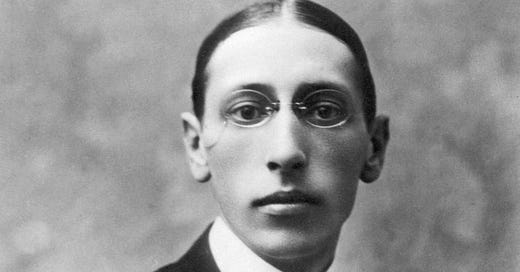



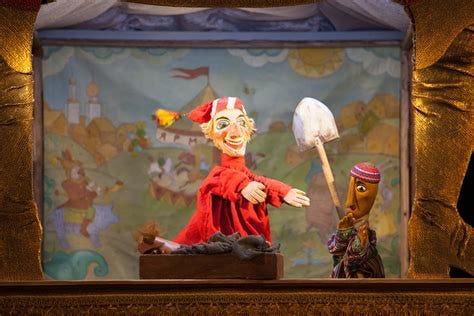
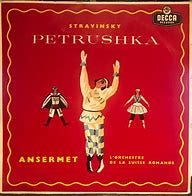
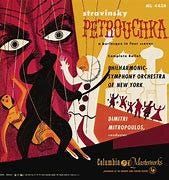
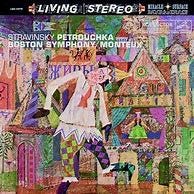
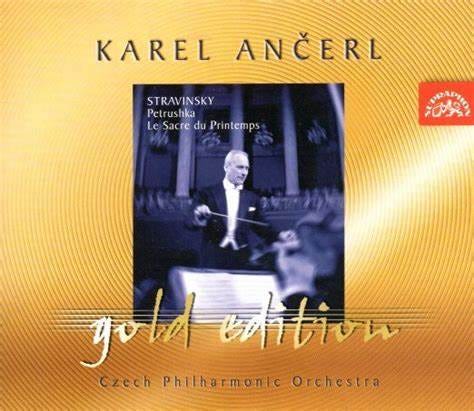
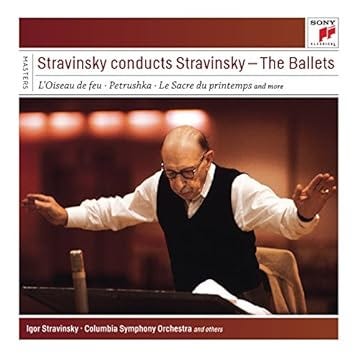
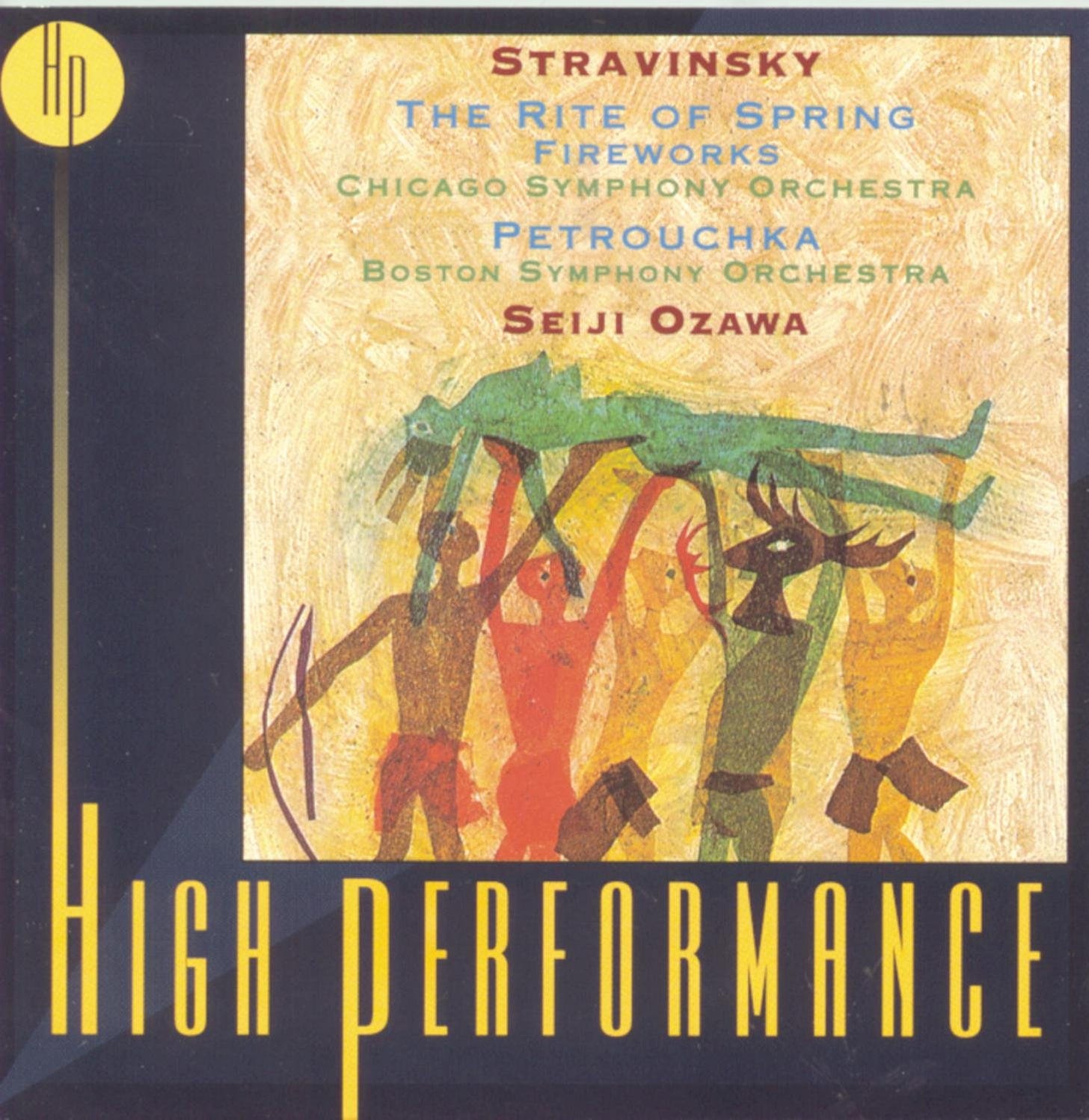
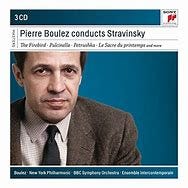
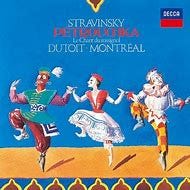
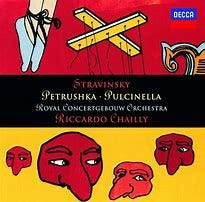
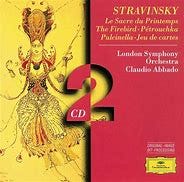
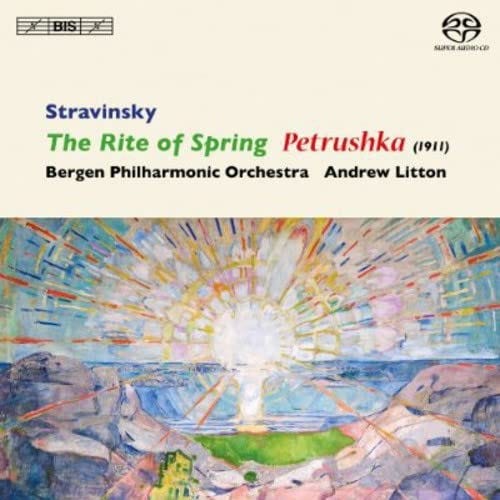
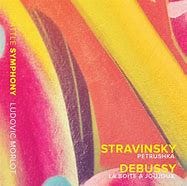
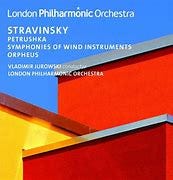
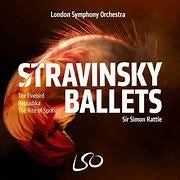
Thank you for another fantastic addition to the collection. One recording not mentioned that I enjoy, is Eliahu Inbal with the Philharmonia Orchestra.
"Diaghilev had already commissioned Stravinsky to write music for a second ballet after The Firebird, but when Diaghilev visited Stravinsky in Switzerland in the fall of 2010, he found Stravinsky working on a different piece which was intended to be a concert work." The year seems incorrect.